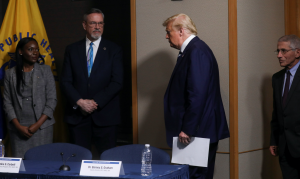A new report from Save the Children found that Louisiana, Mississippi, Texas and New Mexico ranked as the worst states for children during the COVID-19 pandemic. Louisiana and Mississippi consistently placed in the bottom 10 of states for the last five months of 2020.
Save the Children ranked states based on data gathered by the U.S. Census Bureau’s bi-weekly Household Pulse Survey. The resulting report, “Childhood in the Time of COVID,” analyzed the social and economic effects of COVID-19, including how racial and income inequality impact families differently within each state. The report focuses on “three hardships that are making it more difficult for children to reach their full potential: hunger, lack of tools for remote learning and trouble making ends meet.”
Minnesota, New Hampshire, Utah and Washington consistently ranked among the 10 best states for families — defined as households with children under age 18.
Food insecurity underpins the entire report, according to Save the Children’s Vice President of U.S. Programs & Advocacy, Betsy Zorio. Six million more children are experiencing hunger because of the pandemic, meaning there are now about 17 million children facing hunger in the United States.
“Six million more children are hungry now, but when you think about that, that means 11 million children in America were hungry prior to the pandemic, and that’s really unacceptable for a country that’s as wealthy as ours,” Zorio told CBSN.
“If kids are hungry they can’t learn,” she said.
Tens of millions of American children rely on their school to provide “breakfast, lunch and sometimes even dinner,” Zorio explained. School closures and distance learning have put nearly all of them in a precarious situation.
Save the Children is advocating for President Joe Biden’s American Rescue Plan to pass so that vital food programs, such as SNAP, better known as food stamps, and WIC (Special Supplemental Nutrition Program for Women, Infants, and Children), can reach the millions of more Americans who now need them. The plan would provide a 15% increase in SNAP benefits, as well as an extension and expansion of the “pandemic electronic benefits transfer,” which provides benefits to children who would have received free or reduced-price school meals, according to Zorio.
“It’s time for us to make a real investment in proven anti hunger programs including SNAP and WIC,” she said. “We’re calling on the U.S. government to invest in those programs at more appropriate levels in this next stimulus package and then going forward.”
Louisiana’s last place ranking was due in part to the fact that a quarter of all families in the state say they do not have enough to eat, according to the report. The state also lags in providing students with tools for remote learning, like computers or internet access, and support for families experiencing difficulty paying bills during the pandemic.
The report, however, points out that no matter the state, income above all determined a child’s experience during the pandemic. “The wealthiest families in Louisiana… are all getting enough to eat, and with few exceptions, can meet their regular household expenses,” it reads.
“State-level ranks hide huge disparities. Even in the best states, the poorest families are often much more likely to suffer the negative effects of COVID than the wealthiest families,” according to the report. Minnesota, for example, ranks first overall, but survey results showed that “78% of the poorest households are not able to stop or control worrying, compared to 35% of the wealthiest households.”
Zorio stressed that the mental health of parents and caregivers has a direct impact on their children’s mental health.
“Our report found that three (out of) four caregivers in North America have experienced high levels of anxiety. They’re feeling nervous, anxious or on edge at least several days a week. Many are also reporting signs of depression, and that’s very troubling to us,” she said.
“If children are seeing mom and dad anxious and afraid, it makes children anxious and afraid.”




